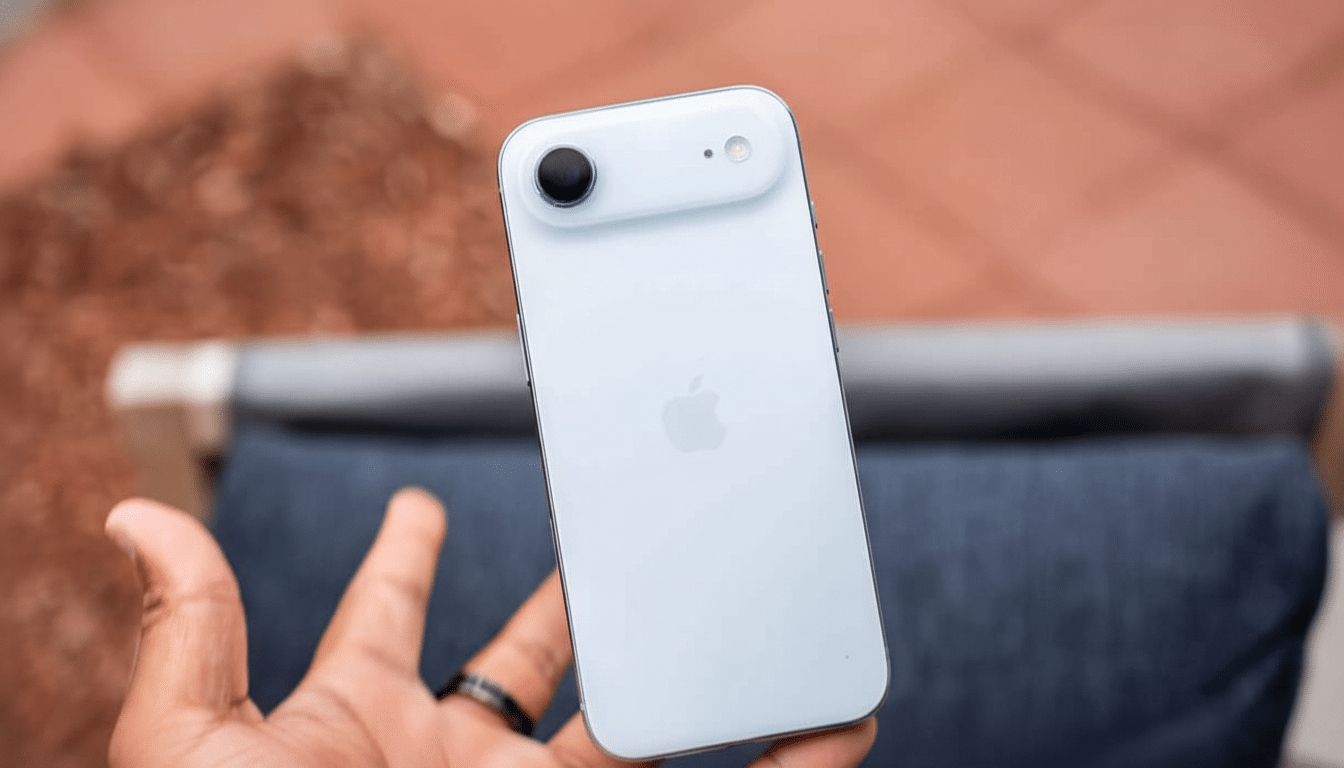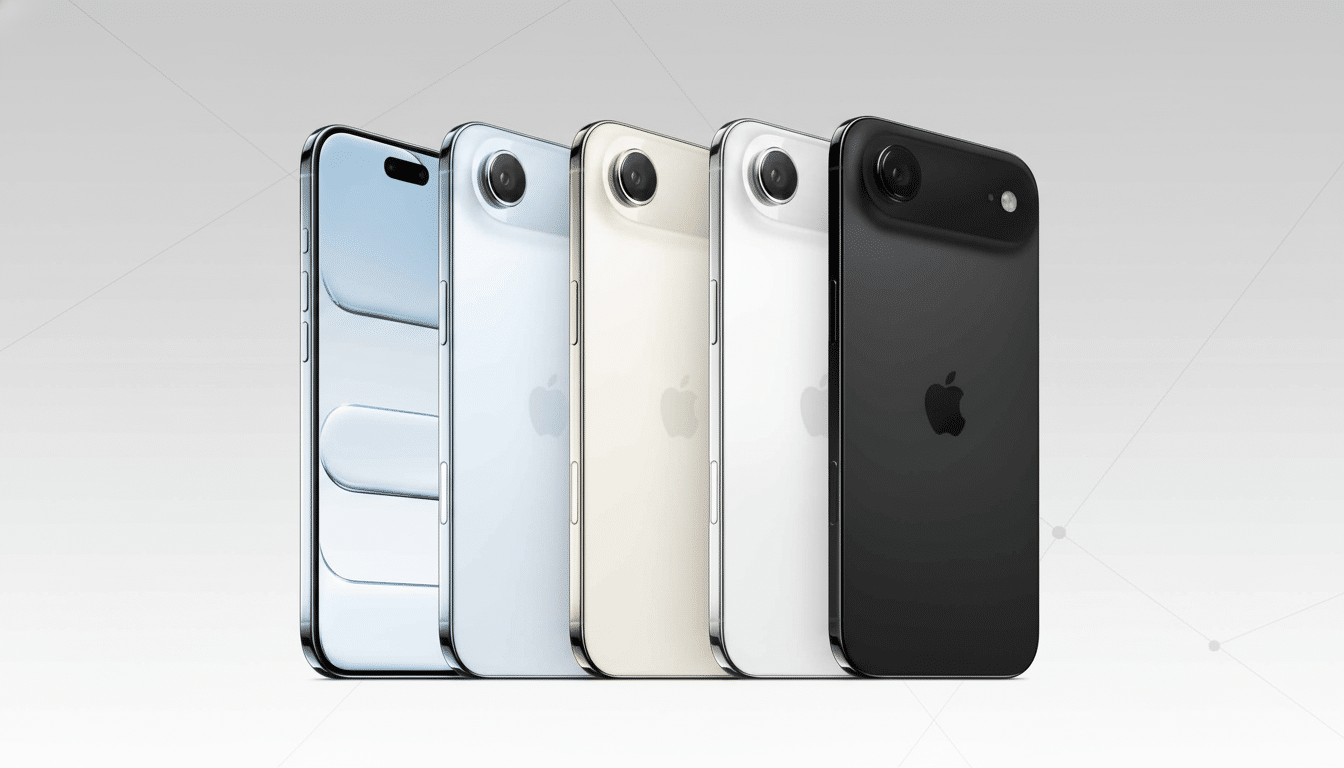THE THINNEST PHONE OF THE YEAR: The year’s thinnest-phone showdown has Apple’s iPhone Air up against Samsung’s Galaxy S25 Edge. On paper they are nearly identical, but “nearly” is doing a great deal of work. Here’s how much thinner the iPhone Air is — and why that small difference can feel much larger in person.
The Numbers, to the Millimeter
The iPhone Air, by company specs, is 0.22 inches thick, compared to the 0.23-inch thickness of the Galaxy S25 Edge. That’s a difference of 0.01 inch, or roughly.254 millimeters. In other words thickness to thickness the Air is almost 4.3% thinner than the Edge.

In metric, the Air is 5.59mm; the Edge is 5.84mm. The space — about a quarter of a millimeter — is approximately equivalent to the thickness of an average business card. Trivial, yes, but not meaningless when you are referring to machines you handle a few hundred times a day.
The rest of the dimensions are tight also: The Air’s footprint is just a bit smaller (6.15 by 2.94 inches) than the Edge (6.23 by 2.98 inches). Weight is a wash—approximately 165g for the Air and just about 163g for the Edge—so the difference is not in the feeling of mass, but shape.
Why 0.01 Inches Can Feel Bigger in Your Hand
Ergonomics outweigh mathematics in how thin a phone “feels.” The iPhone Air opts for a rounded metal perimeter which provides a softer contact point for your hand, and brings your grip closer to the device’s center of mass. The Galaxy S25 Edge on the other hand goes for flatter, squarer sides that meet the glass at a steeper angle. Flat edges increase surface contact and make the sidewalls feel more prominent, which can read as “thicker,” even though the thickness difference might be only 0.01 inches.
Industrial design research — not to mention many a teardown by experts like iFixit over the years — has revealed that curvature, edge radius and the distribution of weight defines perceived thinness as much as a reading on a caliper. Which means two phones with closely rated measurements can leave a massively varied first impression.
The Engineering Behind Ultra-Thin
Coming under 6mm requires some pretty ruthless packaging. Apple houses these bulky elements—a camera stack, a logic board, and thermal layers—under a raised top “plateau,” and fully embraces eSIM in order to take back the space that a physical SIM slot and tray would require. Samsung goes the same way: stacked (multi-layer) PCBs, slim antenna modules and aggressive internal consolidation free margins while low-profile vapor chamber also takes care of heat.
Both designs rely on high-strength aluminum frames, ultra-thin glass and a process of assembly using adhesives to shave off fractions of a millimeter.

The trade-offs of tighter tolerances have been well noted by analysts like Counterpoint Research and teardown firms: tighter tolerances increase manufacturing complexity, and there is less vertical room for battery swell buffers, speaker resonance chambers and port reinforcements. When phones are this skinny, every gasket and screw boss is compromised.
Screen Size, Cases and Everyday Use
The Edge is the larger of the two in terms of screen size (6.7 inches versus 6.5 on the Air), which has a slight effect — more screen area can make a phone feel wider and, kind of by association, less “slim.” Nevertheless, the radical departure here is in the side profile and frame geometry.
One note of practical reality: most cases add between 0.5mm and 2.0mm to the watch’s total thickness, depending on style. In a thin case, the Air should still maintain an edge, but a rugged case can cancel that advantage. If you’re rocking your phone without a case, it’s the curviness and the edge that matters more than the raw spec sheet.
Price and Value Context (Without Losing the Thread)
And pricing falls in between: the iPhone Air starts below the higher-tier sticker for the Galaxy S25 Edge. That makes a difference if maximum thinness at the cheaper price is what you care about. Nonetheless, and like that X range, both will be positioned as halo-thin models rather than mass-market volume drivers, a strategy that’s been used before as brands flaunt engineering nous at the top of the scale.
Bottom Line: The Air Is Thinner — And It Feels Like It
For anyone that’s chasing the slimmest feel, the iPhone Air wins both on paper — 0.01 inches (though ≈ 0.25mm) or about 4.3 percent smaller — and by hand.
The curved frame hides a buffoonish profile better than the Edge’s squared sides. The Galaxy S25 Edge pushes back with a larger screen and ever so slightly lighter body, but most users would probably call the Air the smaller device in a hand-by-hand gauge.
Long story short: the difference is minuscule on a ruler, appreciable in your hand, and exactly the kind of detail that’ll determine which phone feels “knife-thin” once you actually live with it.

